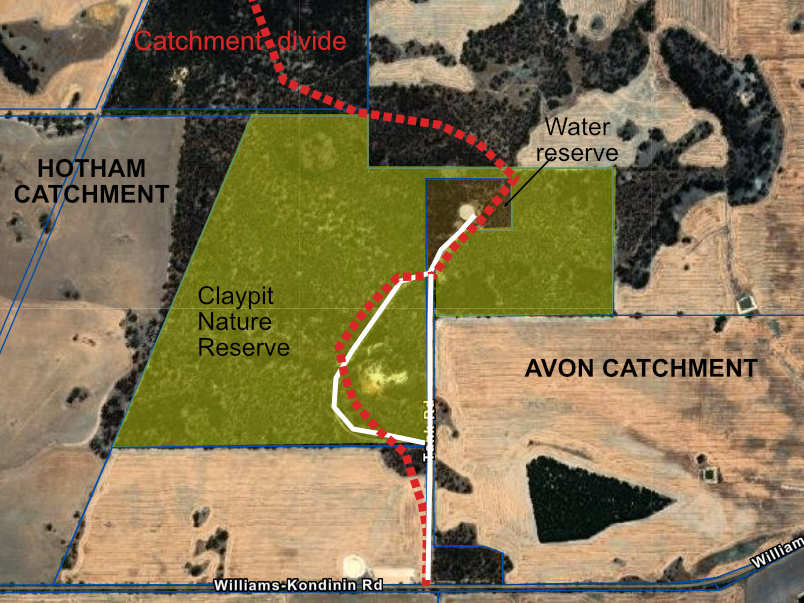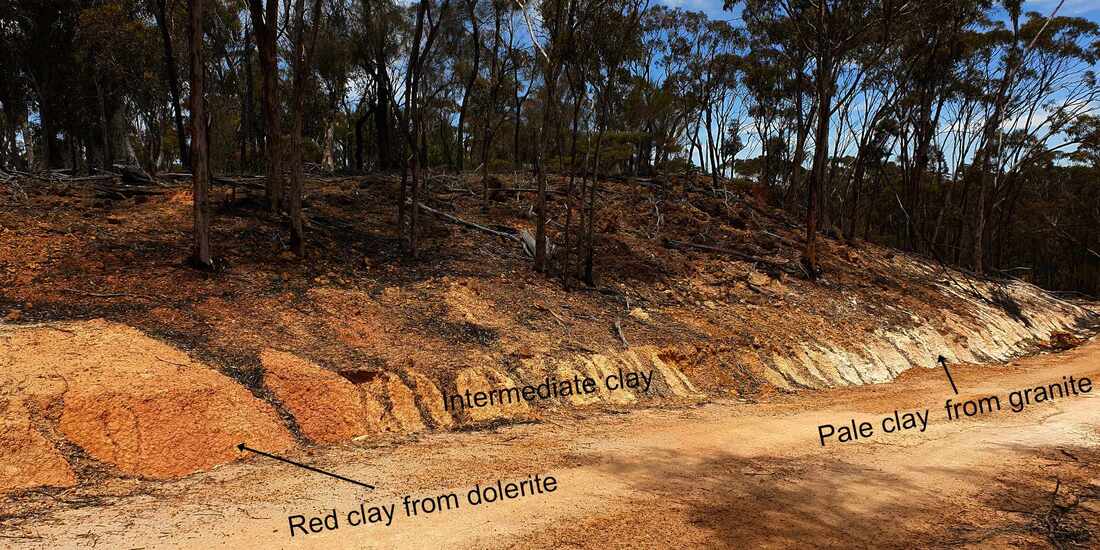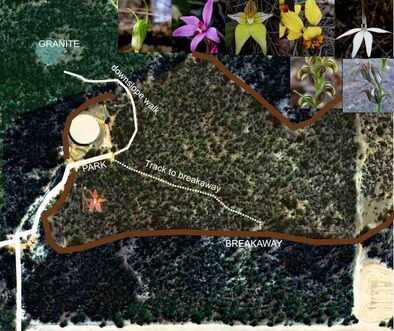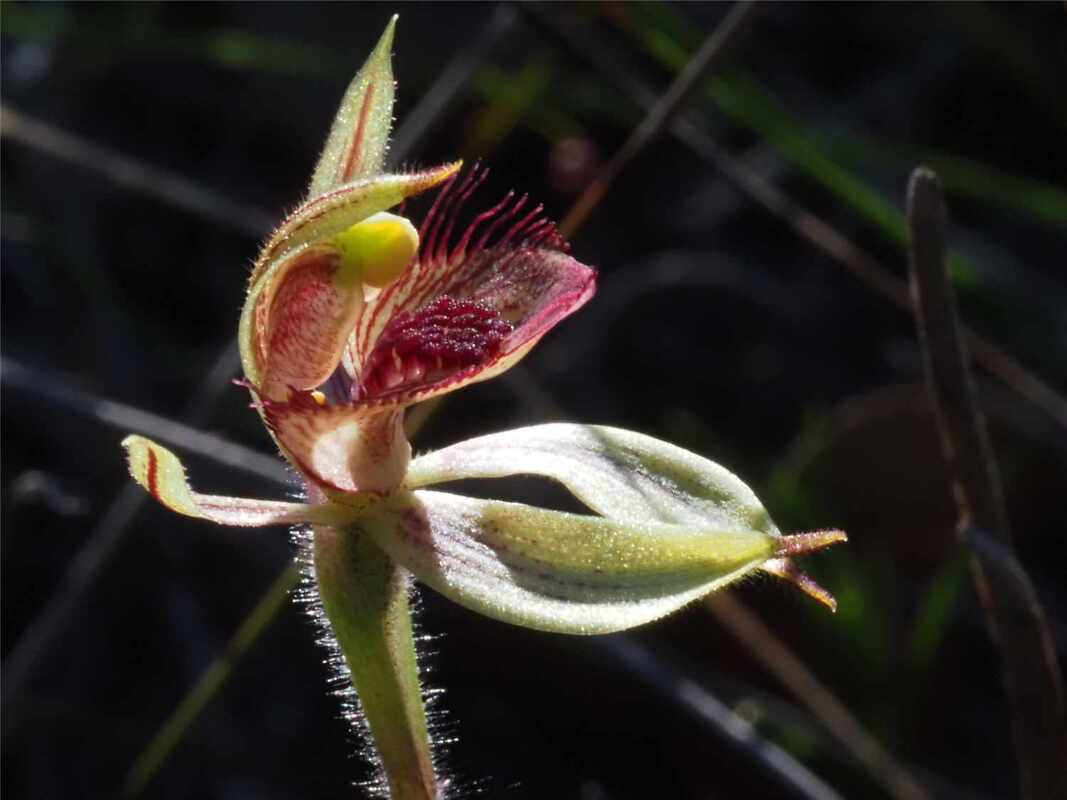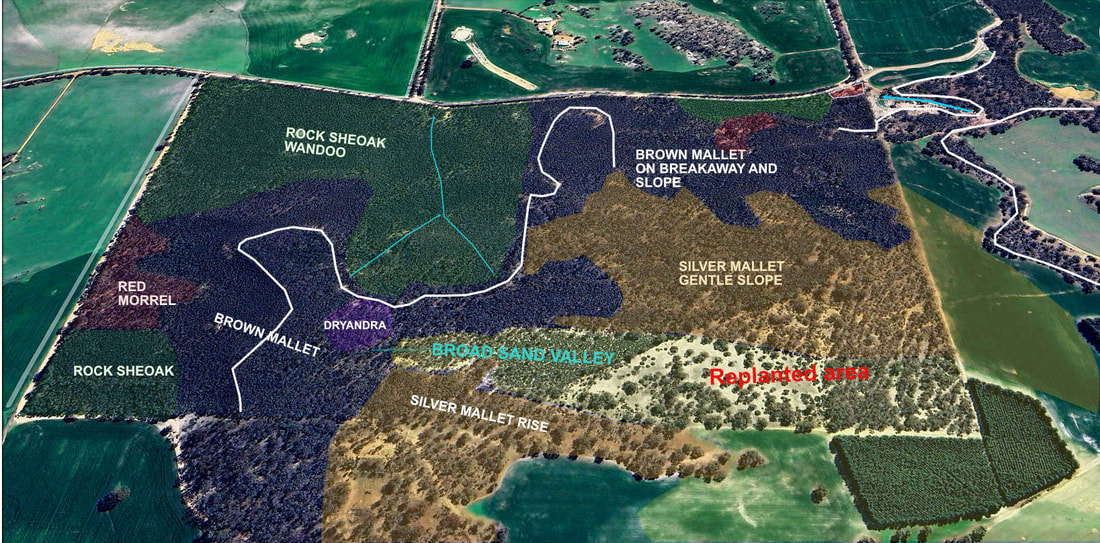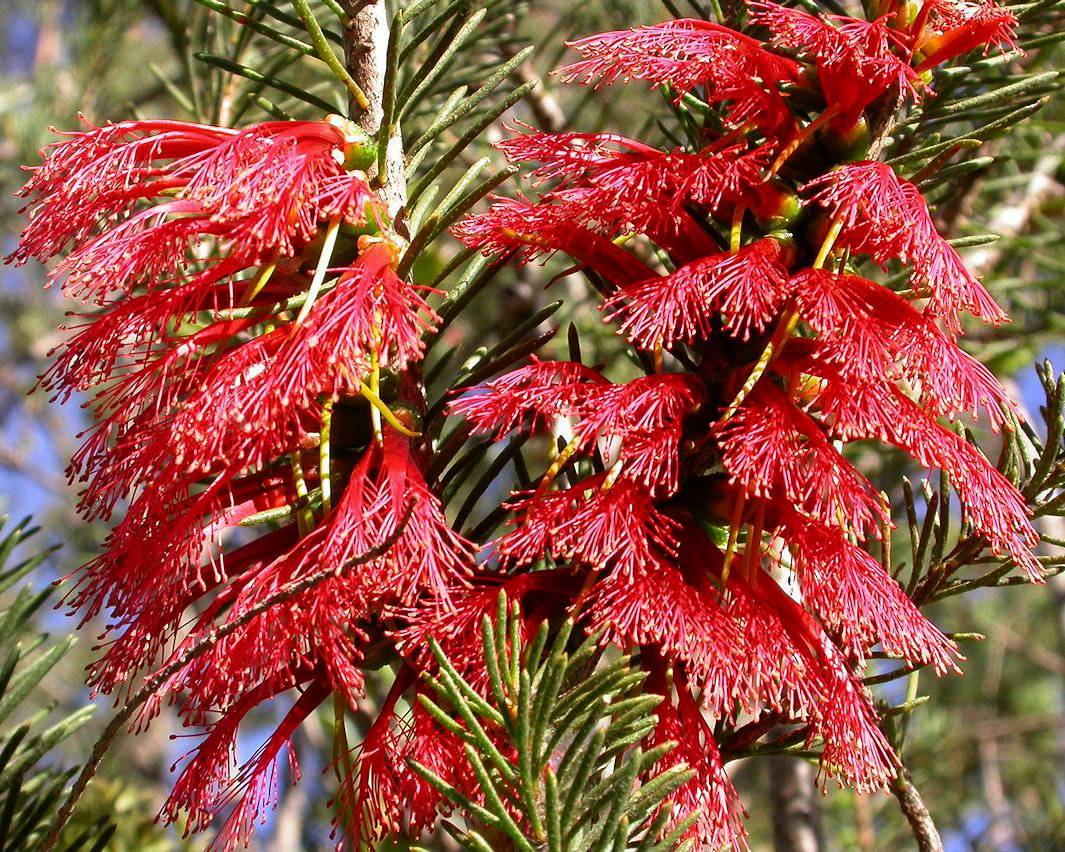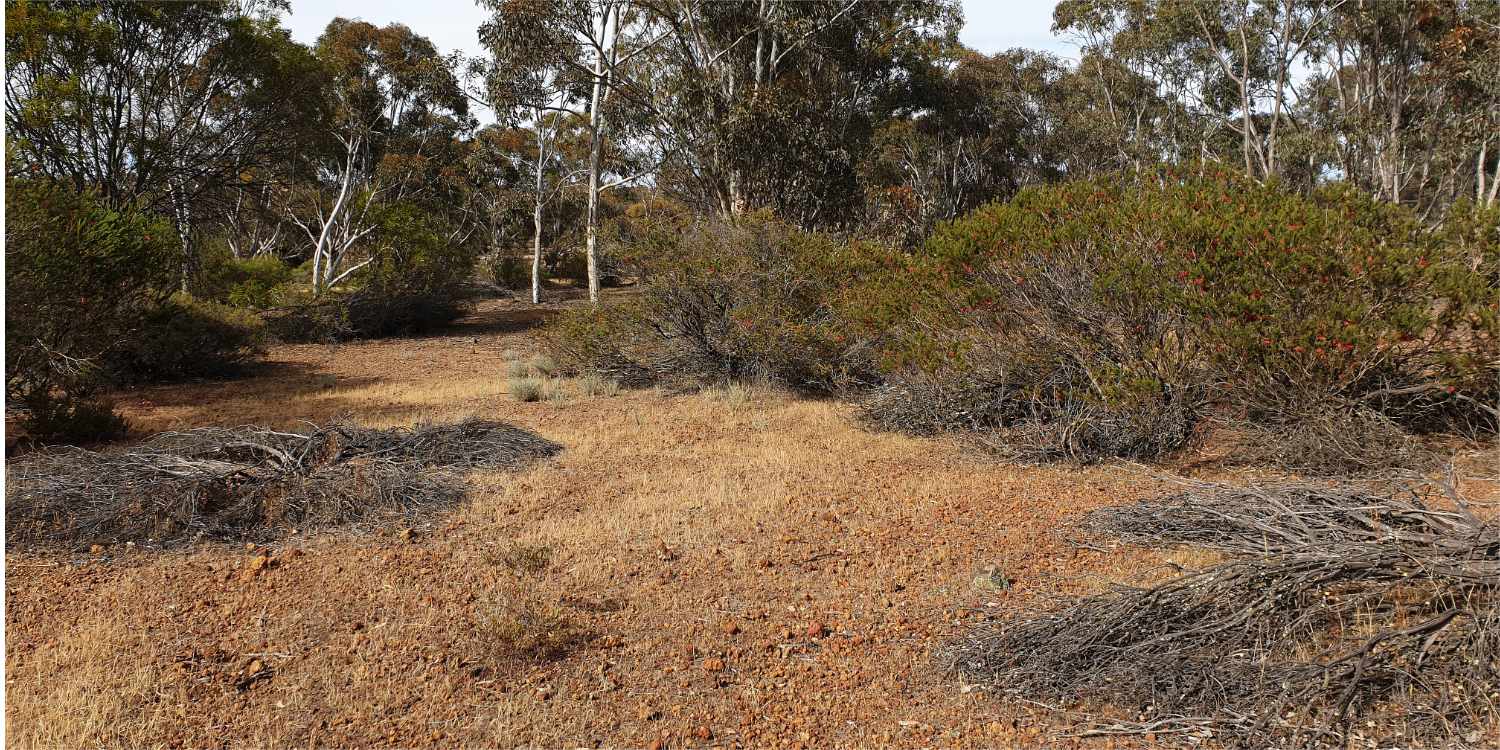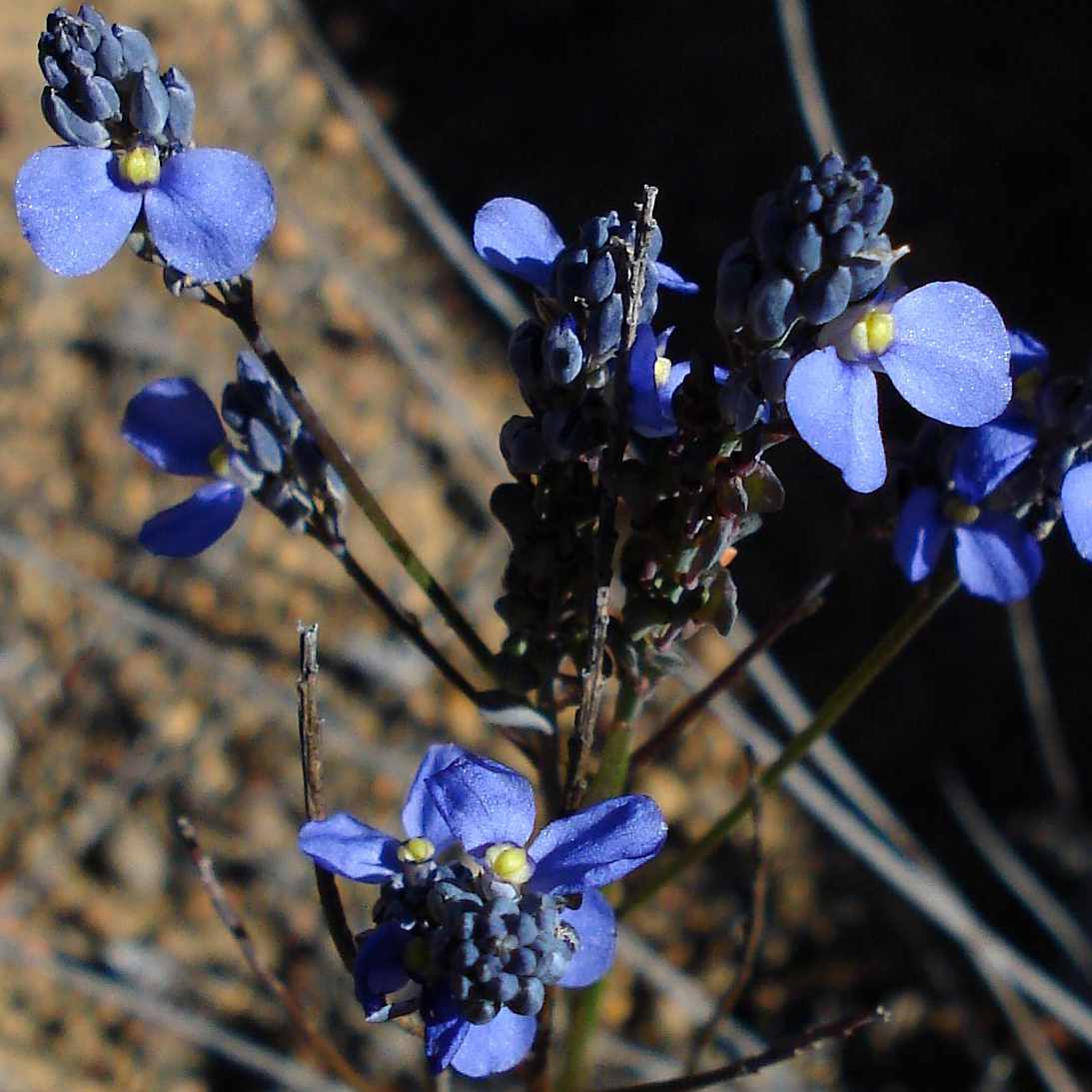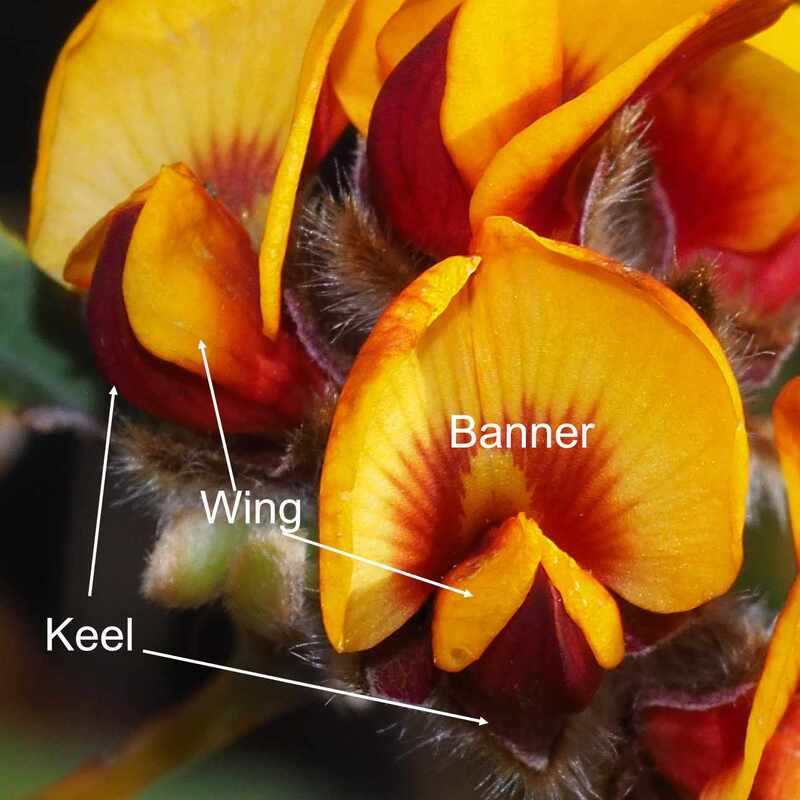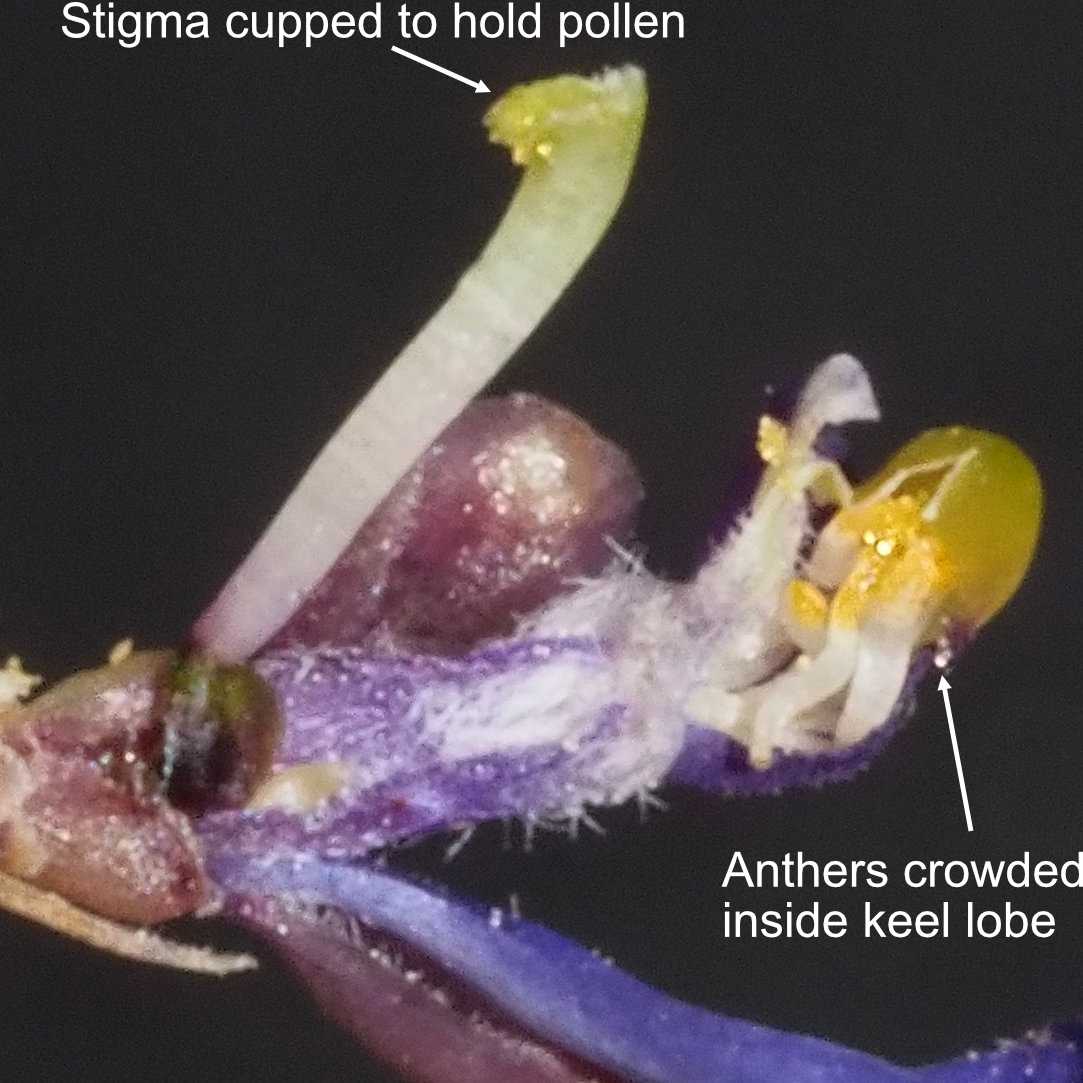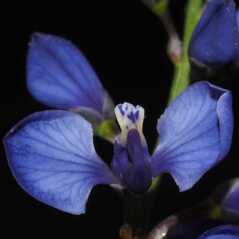Alyogyne huegelii and Solanum symonii are both recorded in Florabase as mainly coastal species.
How can this be?
In my opinion it is a by product of plant type, soil type, fragmented natural vegetation and changed fire management.
- Both species are fire ephemerals, which only live for 6 to 8 years, and need fire for seed to germinate.
- Both occur here on sloping heavy red soil from mafic (dolerite) rocks, which usually occurs as lines from cracks in basement granite rock. These soils are less common in our reserves, because they are good farming soils.
- Scattered wheatbelt reserves are not actively managed. Ockley and Birdwhistle reserves had not been burnt for decades
| I found Solanum symonii growing with Alogyne huegelii, in a few other spots at Ockley Nature Reserve under mallees, and on heavy red soil near Birdwhistle Rock. It has a green berry and is listed as an edible Kangaroo Apple. However but is very bitter, and other Solanaceae species such as the introduced Apple of Sodom are poisonous. From a distance the two flowers can seem to be similar, but they are from different families. Alyogyne huegelii was previously in the Bombacaceae (cotton family), but has been lumped into the huge Malvaceae family. It is a hairy plant with characteristic star shaped bristly hairs (Solanum symonii is smooth), and a dry fruit capsule. The flowers can be similary coloured, but the Alyogyne flower has a many stamens attached to a stamen tube, which surrounds the style. |


















